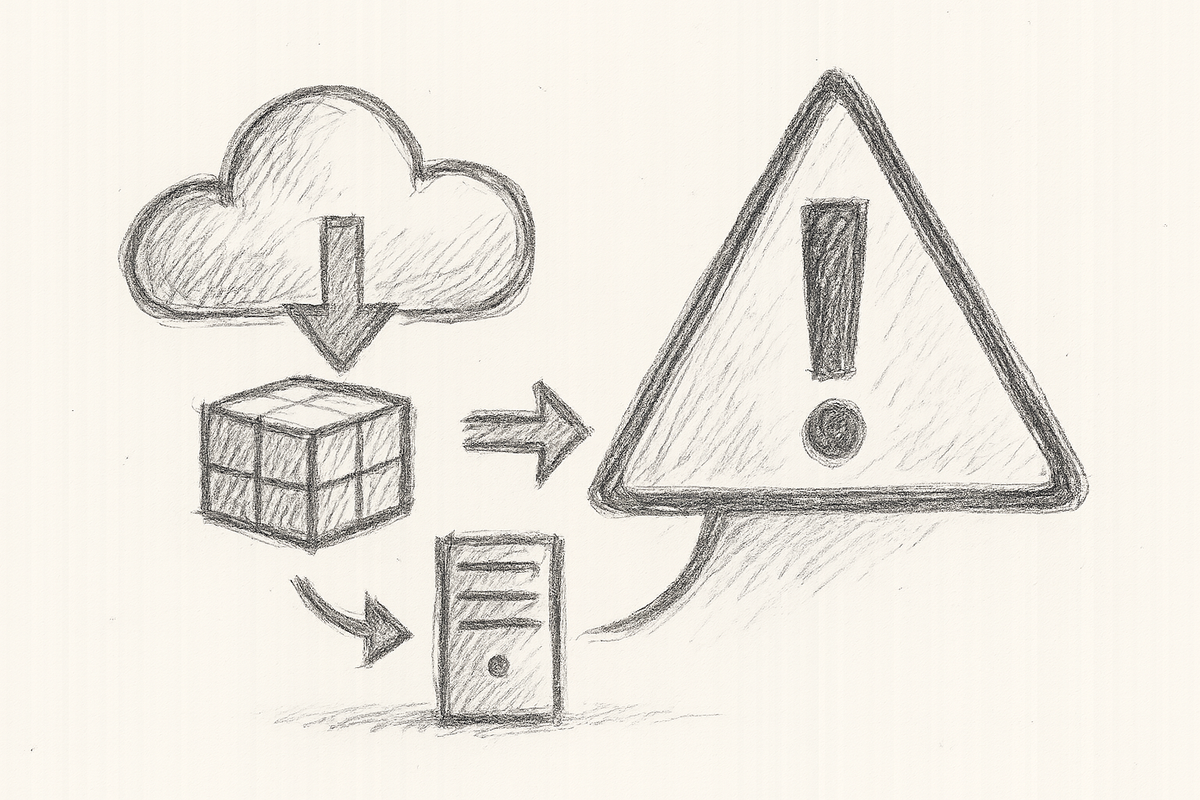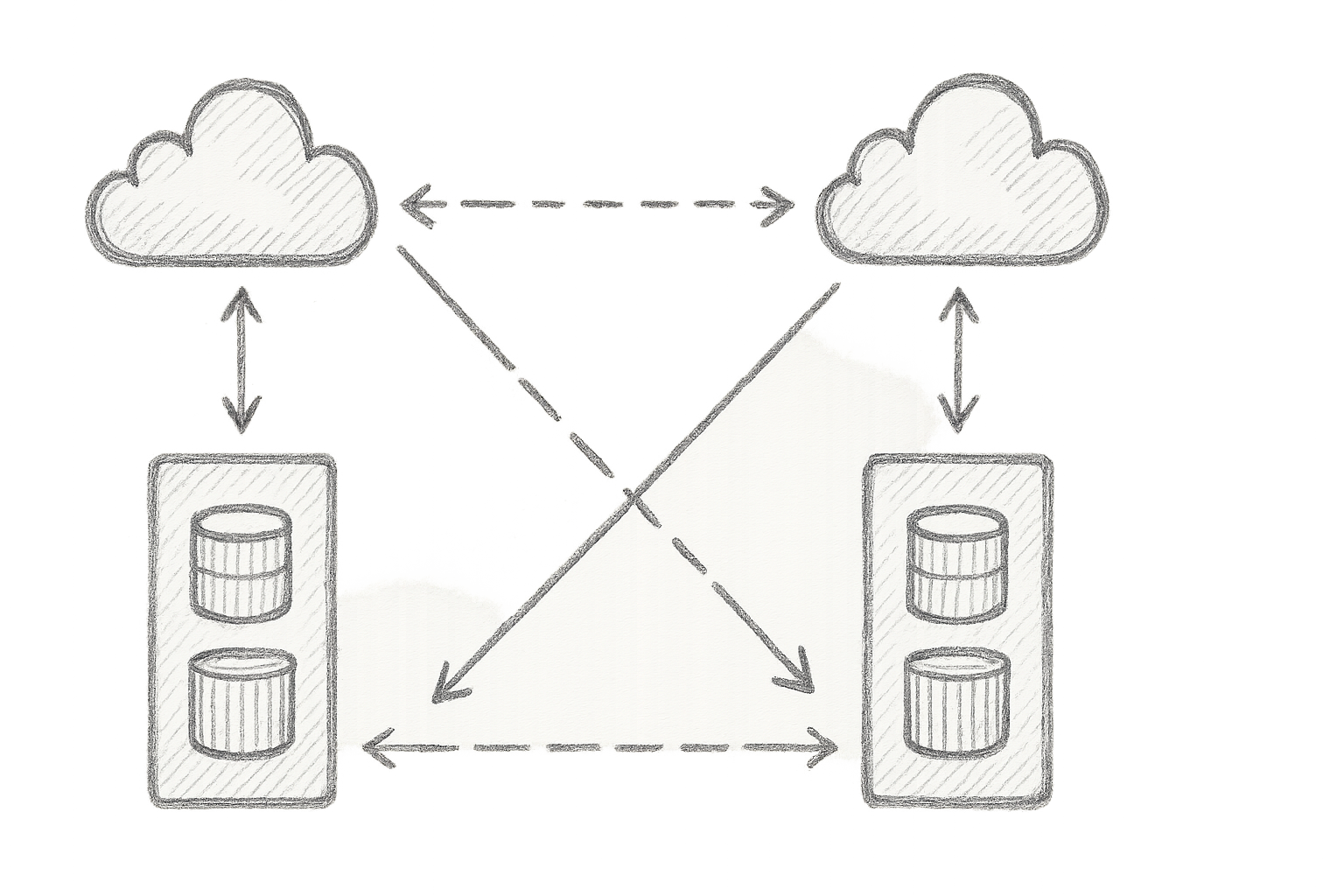Docker Hub/Build Cloud’s "Black Monday" (Oct 20, 2025) — Supply Chain Lessons for DevOps Resilience

Docker Hub/Build Cloud’s "Black Monday" (Oct 20, 2025) — Supply Chain Lessons for DevOps Resilience
Why Docker Hub’s Black Monday Shattered Our Supply Chain Illusions
Have you ever wondered just how precarious your container supply chain really is? On 20 October 2025, I learned the hard way. Docker Hub and Build Cloud’s catastrophic outage, triggered by a meltdown in AWS US-EAST-1, didn’t just pause development—it brought entire pipelines to their knees, exposing how thin our safety nets truly are.
If you’ve ever told yourself, “One region outage won’t affect me,” then brace yourself. This event was a rude awakening: relying solely on mono-region cloud infrastructure is not just risky, it’s reckless. When AWS’s largest region staggered and collapsed, so did thousands of builds, deployments and the carefully choreographed DevOps dance everyone prides themselves on.
Downtime is not merely an inconvenience; it snowballs into lost revenue, missed deadlines, and shredded trust. If you think your container supply chain manager guarantees high availability, think again—this was a house of cards drenched in petrol, waiting to ignite.
The Perfect Storm: How AWS US-EAST-1 Took Docker Hub Down
Behind the scenes, the AWS US-EAST-1 failure was no garden-variety outage. Beginning at 06:48 UTC, DynamoDB's APIs started sputtering, swiftly followed by EC2 API malfunctions, Network Load Balancer glitches, and a crippling failure of AWS STS (Security Token Service). A race condition bug in DNS automation combined with cascading overloads turned AWS’s backbone into a trembling house of brittle cards AWS US-EAST-1 Outage Post-Mortem.
Docker Hub, Build Cloud and Automated Builds leaned heavily on these AWS services. As the underlying infrastructure gasped for breath, Docker’s upstream dependencies caught fire. Cache misses multiplied, latencies ballooned, and degraded service modes quickly devolved into total outage by 08:01 UTC.
This meltdown dragged on for more than 25 hours. Partial restorations began at 09:40 UTC, with full recovery only confirmed the following morning. Anyone on call that day (me included) witnessed stalled pipelines and developers furiously kicking chairs like it was the latest rage dance.
Two critical takeaways stand out:
- Single-Region Dependency: Docker Hub’s lifeline was AWS US-EAST-1—no failover, no graceful degradation. When the region blacked out, Docker Hub did, too.
- Compound Supply Chain Blind Spots: Many teams blindly trusted Docker’s hosted registry without any fallback. The assumption that “managed cloud equals always available” is disastrously naive.
When I stared at the growing number of failed builds and endless queued deployments, the truth hit harder than a misfired container image: many container supply chains resemble a tinderbox, relying on invisible cloud automation and single-provider health.
For a rigorous technical breakdown of the AWS outage and resilience patterns you absolutely must know, check out Learning from October’s AWS US-EAST-1 Outage: Battle-Tested Resilience Patterns to Prevent Cascading Failures.
Wait, What? The Hidden Fragility You’ve Ignored in Your Container Supply Chain
Docker Hub is ubiquitous—the default registry that nobody questions. And therein lies the problem. How often do you truly consider what dependencies lie between your “push-pull-automate” routine and that gleaming, always-on cloud registry?
First brutal truth: your supply chain extends beyond your immediate view, tangled with all the upstream cloud services Docker Hub depends on. The AWS US-EAST-1 outage, a few network hops away, cascaded through thousands of systems worldwide. With a central managed registry, your entire pipeline snaps when the cloud infrastructure hiccups.
Second bombshell: offline or air-gapped artifact reserves? Most teams don’t have them. The idea of replicating critical images internally triggers a yawn or a "we don’t have time" excuse — yet when Docker Hub goes dark, there’s no Plan B. The cascade? Build failures, pipeline halts, and screaming developers.
This “won’t happen to me” mentality is frankly delusional. It’s not a matter of “if” but “when” the cloud provider stumbles. Ask yourself this honestly—how resilient is your pipeline if the registry disappears?
To put this in perspective, the recent Global Microsoft Azure Outage (Oct 29, 2025) was a déjà vu nightmare. One human error, one missed fail-safe, and a continent-scale disruption followed. The writing is on the wall: multi-cloud resilience and fallback strategies are not optional; they’re survival tools.
Building Your Fortress: Reinforcing Container Supply Chains with Proven Playbooks
Enough grim tales. I’ve been in the trenches and emerged battle-hardened. Here are pragmatic strategies to bulletproof your supply chain before you become the next cautionary tale.
1. Pull-Through Caches: Your First Line of Defence
Deploying a pull-through cache registry is like giving your builds a local supermarket instead of relying on an international delivery every time. These caches store pulled images locally, reducing latency and avoiding external outages.
Here’s a simple config.yml to set up a Docker Registry mirror cache Docker Registry Mirror Docs:
version: 0.1
proxy:
remoteurl: https://registry-1.docker.io
storage:
filesystem:
rootdirectory: /var/lib/registry
http:
addr: :5000
# Launch this on a resilient node or inside a Virtual Private Cloud (VPC).
Then configure your Docker clients to pull via this proxy:
docker pull localhost:5000/library/nginx:latest
But beware:
- Cache invalidation is essential. Stale images lead to “wait, what?” surprises down the line. Schedule expiry to avoid drift.
- Always use digest pins in your CI/CD pipelines to fix images to specific SHA256 hashes, avoiding unintended updates.
- Secure your proxy with proper access controls — unauthenticated or public proxies can quickly become freeloaders and security hazards.
2. Mirror Registries: Owning Critical Images
If your applications rely heavily on specific base or third-party images, don’t leave your fate to chance. Maintain your own synchronized mirror registry.
The tool of choice? skopeo—a slick utility for syncing container images Skopeo GitHub. Example snippet with comments:
# Sync Node 14 Alpine image from Docker Hub to internal mirror
skopeo sync --src docker --dest docker \
docker://library/node:14-alpine \
docker://myregistry.internal.company.local/mirror/node:14-alpine
Pro tip: Add multi-region replication for your mirrors to distribute risk geographically. Complex? Sure. Worth it? Absolutely.

3. Offline Artifact Reserves: Your Emergency Lifeboat
When the cloud goes totally dark or your network is air-gapped, offline reserves save the day. Export critical images as tarballs and stash them in internal artifact stores or performant network file shares.
Example commands:
# Pull the image from the internal mirror
docker pull myregistry.internal.company.local/mirror/myapp:prod
# Save saved image as tarball for offline use
docker save myregistry.internal.company.local/mirror/myapp:prod > myapp-prod.tar
# Transfer the tarball to the offline environment (USB, NFS, etc.)
docker load < myapp-prod.tar
Incorporate fallback logic into your pipelines so if a remote pull fails, it transparently switches to the offline cache:
steps:
- name: Pull image with fallback
run: |
# Attempt to pull from internal mirror, fallback to local tar load if fail
docker pull myregistry.internal.company.local/mirror/myapp:prod || docker load -i myapp-prod.tar
4. CI/CD Pipeline Hardening: Fail Fast, Retry Smarter
Here’s a little confession: blindly aborting builds on the first hiccup is the hallmark of rookie ops. Instead, implement retries with exponential backoff—and fallback mirrors—within your pipeline scripts.
GitHub Actions snippet example with comments:
jobs:
build:
runs-on: ubuntu-latest
steps:
- name: Attempt to pull image from primary registry with retries
run: |
for i in {1..3}; do
docker pull docker.io/myorg/myimage:latest && break || sleep $((i*10))
done
- name: Fallback to mirror if primary pull failed
if: failure()
run: docker pull myregistry.internal.company.local/mirror/myimage:latest
For security, never forget to include artifact signing verification with tools like Cosign or maintain SBoM checks to prevent tampering during fallback.
5. Secrets and Credentials: Locking the Back Door
Credentials are often the Achilles’ heel when cloud services hiccup. Implement strict policies to rotate and cache credentials securely.
Use trusted vaults like HashiCorp Vault (latest features include SPIFFE auth and FIPS compliance as of 2024) or cloud-native Key Management Systems (KMS) with local caching. This avoids nasty surprises when the STS service drops dead mid-deployment HashiCorp Vault Blog.
Testing and Monitoring: The Ugly Yet Vital Parts of Resilience
Testing supply chain resilience isn’t fun, but it’s non-negotiable. Here’s your checklist:
- Conduct chaos engineering experiments that simulate external registry failures and observe pipeline reactions.
- Perform load testing focusing on cache hit ratios and latency under peak loads.
- Define clear observability metrics: cache hits/misses, authentication failures, image pull durations.
- Maintain up-to-date runbooks tailored for supply chain incidents with well-defined escalation paths.
If you’re not baking this into your DevOps DNA yet, consider this your no-excuses wake-up call.
Keep an Eye on This: The Future of Supply Chain Security
Thankfully, the industry is not sitting idle. Zero-trust supply chain architectures are gaining momentum, enforcing provenance and attestation rigorously. Major cloud providers are expanding multi-region container registries to slice through single-region risk.
Open standards like Sigstore for code and image signing, Notary v2 for content trust, and OCI enhancements (focusing on supply chain security) are sharpening the trustworthiness of container workflows. AI-driven anomaly detection tools are emerging, aiming to sound the alarm before disruptions escalate.
Even the buzz around blockchain-based decentralised caches is moving from sci-fi fantasy to a tangible possibility. Strap in; the ride is accelerating Sigstore Project, Notary v2 Documentation.
Conclusion: Act Before the Next Black Monday Strikes
I’ve been there—facing down a towering failure during a critical deployment. It’s brutal, infuriating, and utterly preventable. Here’s what you can do right now:
- Deploy pull-through caches or mirror registries immediately to insulate builds from upstream failures.
- Build offline reserves for your most important images to serve as a safety net.
- Harden your pipelines with smart retry, fallback logic and strict artifact verification.
- Measure relentlessly: track cache hit ratios, build success, and mean time to recovery (MTTR) on supply chain incidents.
- Embed resilience into your incident playbooks, team culture, and architecture discussions.
The fragility of container supply chains is not a theoretical risk. I’ve felt the fire and escaped to tell the tale. With pragmatic designs, relentless testing, and a pinch of dry humour, we can turn future Black Mondays into mere footnotes on the DevOps timeline.
For a deeper understanding of regional cloud failures and how to prevent cascading disasters, also see Learning from October’s AWS US-EAST-1 Outage: Battle-Tested Resilience Patterns to Prevent Cascading Failures and the Global Microsoft Azure Outage (Oct 29, 2025).
References
- Docker Hub Incident Report – October 20, 2025
- AWS Service Disruption in US-East-1
- LinkedIn Analysis of AWS US-EAST-1 Outage by Mahesh Reddy Avula
- Sigstore Project
- Notary v2 Documentation
- Cosign for Image Signing
- Open Container Initiative (OCI)
- Kubernetes Blog on Pull-Through Cache Registry (archived)
This article draws on my direct experience managing container outages and architecting supply chain resilient DevOps systems. Expect opinions tempered with dry wit and deliberate provocation—because staring at disaster and doing nothing is the real insanity.
